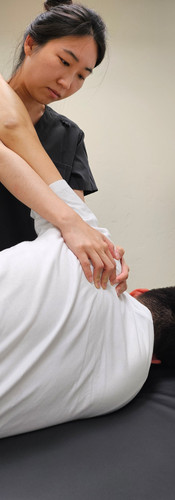Have you ever felt intrigued by the subtle yet powerful realm of osteopathic manipulative treatment (OMT)? In this blog post, we delve into the fascinating world of OMT techniques that hold the key to natural healing. Whether you are a seasoned practitioner or a curious soul seeking alternative avenues for wellness, join us on this enlightening journey to uncover the mystery behind OMT.
Unveiling Myofascial Release
One of the foundational pillars in OMT is myofascial release. This technique focuses on releasing tension within the fascia, the connective tissue that surrounds muscles and organs. By gently applying pressure, practitioners aim to alleviate restrictions in the fascia, promoting increased mobility and overall well-being.
Harnessing Muscle Energy
Another compelling technique within the OMT repertoire is muscle energy. By engaging the patient's muscles in a specific direction against a counterforce applied by the practitioner, muscle energy techniques seek to restore muscle function. Basically, we are retraining your muscles to function optimally.
Balancing Ligamentous Tension
Exploring the concept of balanced ligamentous tension in OMT reveals a meticulous approach to harmonizing the supportive structures of the body. By gently engaging with ligaments and joint capsules, practitioners aim to restore equilibrium, enhance joint function, and alleviate discomfort.
The Serenity of Still Techniques
The art of still techniques in OMT invites practitioners and patients to embrace a moment of silence and reflection. By holding specific body positions, known as "Still Points," individuals may experience profound relaxation and a sense of inner calm. This practice underscores the importance of stillness in facilitating the body's innate capacity for healing. Facilitated Positional Release (FPR) technique may look similar. FPR is known for its calming and soothing effects, creating a sense of serenity during the treatment process.
Embracing Counterstrain
Counterstrain techniques in OMT offer a unique perspective on addressing tender points and areas of discomfort. Through gentle positioning and holding, practitioners aim to reset the neuromuscular system, allowing the body to release tension and restore balance. This gentle approach highlights the interconnectedness of body systems in promoting healing.
During our investigation, we examined 5 techniques that demonstrate the advantages of osteopathy. Although these methods provide valuable perspectives, they only scratch the surface of the wide array of OMT techniques that can be used for patient care. Below is a list of techniques that our provider might utilize for treating a patient.
Active Method
Articulatory Technique
Balanced Ligamentous Tension
Chapman Reflex
Combined Method
Compression of the Fourth Ventricle
Counterstrain
Direct Method
Exaggeration Method
Facilitated Positional Release
Fascial Unwinding
Functional Method
Hepatic Pump
High Velocity/Low Amplitude Technique
Indirect Method
Inhibitory Pressure Technique
Ligamentous Articular Strain
Lymphatic Pump
Mandibular Drainage Technique
Mesenteric Release Technique
Muscle Energy
Myofascial Release
Osteopathy in the Cranial Field
Passive Method
Pedal Pump
Percussion Vibrator Technique
Positional Technique
Progressive Inhibition of Neuromuscular Structures
Range of Motion Technique
Soft Tissue Technique
Still Technique
Thoracic Pump
Traction Technique
V-Spread Technique
Visceral Manipulation
In conclusion, the world of OMT techniques is a captivating realm where the body's inherent wisdom and resilience are honored. If you find yourself drawn to the art and science of osteopathic manipulative treatment, consider delving deeper into the richness of OMT techniques. Embrace the opportunity to enhance your well-being and unlock the potential for profound healing through these valuable practices.
Remember, the journey towards natural healing is a holistic endeavor that encompasses the mind, body, and spirit. Let the wisdom of OMT techniques guide you on a path towards greater vitality and balance.








Comentários